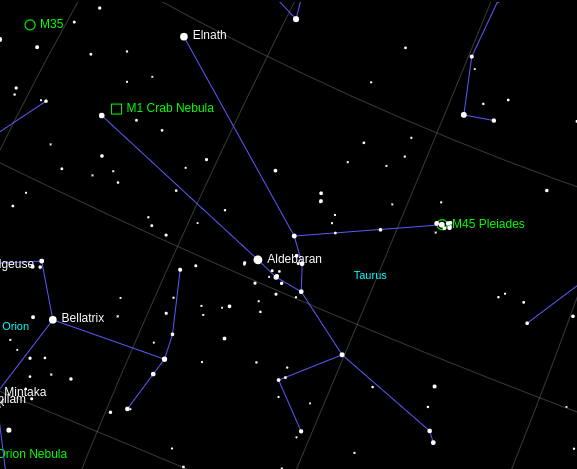Also known as The Seven Sisters, or M45 in the Messier Catalogue, the Pleiades is an open star cluster in the constellation of Taurus. Despite the name Seven Sisters, up to 14 stars are visible to the unaided eye, under the best viewing conditions, as the cluster is the closest of the Messier objects to Earth at around 136 parsecs or 444 light years away (see Astronomical Distance Measurements). The cluster is around 2.5 parsecs or about 8 light-years across.
The stars of the Pleiades are embedded in a reflection nebula of dust from the interstellar medium, which can easily be seen with good binoculars or a small telescope. The cluster contains mainly hot B-type stars (see Types of Stars), most of which are less than 100 million years old.

In ancient Greek mythology, the Pleiades were the seven daughters of the titan Atlas and the sea-nymph Pleione. Their names – Sterope (also known as Asterope), Taygete, Celaeno, Electra, Merope, Alcyone and Maia – are also used to name the stars of the Pleiades – (in roughly clockwise order from the top, in the image above, with the two bright stars at the left of the image named after Pleione and Altas).
The equatorial coordinates of the The Pleiades are:
Right Ascension: 03h 47m 24s
Declination: +24° 07′ 00″
To find the current position of the Pleiades in the sky from your location, visit our Night Sky Simulator.
